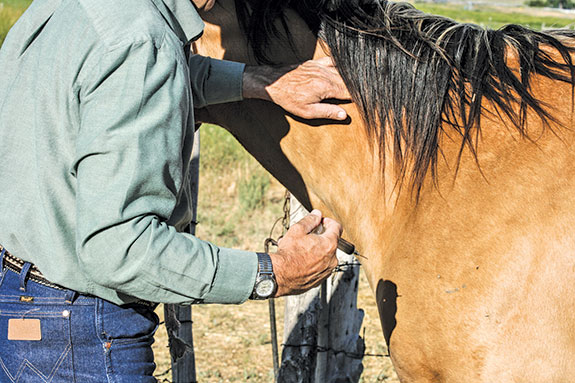It only takes a few keystrokes to search the Internet for vaccination protocols.
However, the normal horse owner may not know the diseases they are vaccinating for or how to make sure your horse has a clean bill of health from the veterinarian.
Most protocols are region-specific, but there are some common illnesses throughout the U.S. included in most vaccines. Horse owners should consult a local veterinarian regarding vaccinations needed for each area.
Most equine vaccines will include seven different vaccines in one injection. These are called a seven-way vaccine. All of the major drug manufacturers produce a multi-virus vaccine so that one shot may be given to protect your horse from many different health challenges.
Most of the vaccines contain Eastern and Western encephalomyelitis (EEE and WEE), West Nile virus, tetanus, equine herpes type 1 and 4, and equine influenza.
Encephalomyelitis is present in all areas of the U.S. Vaccinations have decreased the reported incidence, but the disease is still found in birds and other mammals.

The virus is transferred to horses primarily through mosquitos and other blood-sucking insects. If a horse is infected, mortality rates are over 70 percent after clinical symptoms.
Encephalomyelitis is also called sleeping sickness by older horsemen, as the symptoms are neurological and the horse will appear sleepy and holding head and ears down.
West Nile virus is also transported by mosquitos. The virus causes swilling of the brain and spinal cord, which is evident by various symptoms of neuroinvasive disease.
Horses may recover if anti-inflammatory agents are administered very early in the onset of symptoms.
Tetanus may also be called “lock jaw” as the disease causes a stiffness in muscles, which normally begins with the jaw muscles. Tetanus is in the soil and other surfaces, gains entry into the animal through a wound and is transported through the circulatory and lymph systems.
Equine herpes virus is a DNA virus that occurs in horses around the world. The two most common strains are EHV 1, which causes abortion, respiratory and neurologic disease, and EHV 4, which causes respiratory diseases.
The respiratory forms are most commonly found in foals and yearlings and often during the fall and winter. Equine influenza affects horses in a similar manner as human influenza.
The availability of vaccines has limited all of these diseases in the U.S. Horses that travel extensively should always be vaccinated according to schedule due to the increased exposure to other animals that could potentially be carriers. Ranch horses are only susceptible when new horses are brought in with unknown health status.

It is important for us to protect our horses. Mosquitos transmit many of these diseases. We can take management steps to make sure we limit the opportunity for mosquitos.
Eliminating and preventing standing, non-moving water sources can prevent mosquito infestations that can lead to disease transmission.
Keeping the barn clean and free from wet manure will limit mosquito hatching. Many horse events require a negative Coggins test.
This is a test that determines if a horse has antibodies to equine infectious anemia virus (EIAV). The virus can cause a progressive and often fatal disease.
The test is only valid for a determined length of time as the animal is only truly negative on the day the blood was drawn. If a horse is found to have a positive test, the animal will be permanently quarantined or euthanized.
Modern medicine has provided horse owners with very effective vaccines to help keep our horses healthy. Occasionally, even vaccinated horses may contract the illness, but the severity will be much less and full recovery can be expected.
Vaccines are a very useful tool to prevent illness but should also be combined with common sense about where you take your horses and proper environmental management at home. Horse owners should utilize their local veterinarian for vaccination recommendations and frequency. ![]()
PHOTOS
TOP and MIDDLE: Shots to horses should be administered intramuscularly (IM), most commonly in the neck region.
BOTTOM: You can reduce pain and swelling by rubbing the area after a shot is administered. Photos by Paul Marchant.
Assistant Professor
Colorado State University









